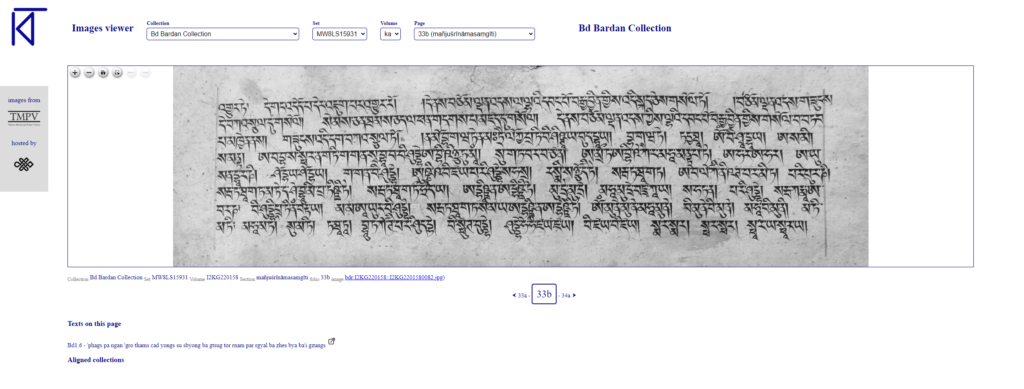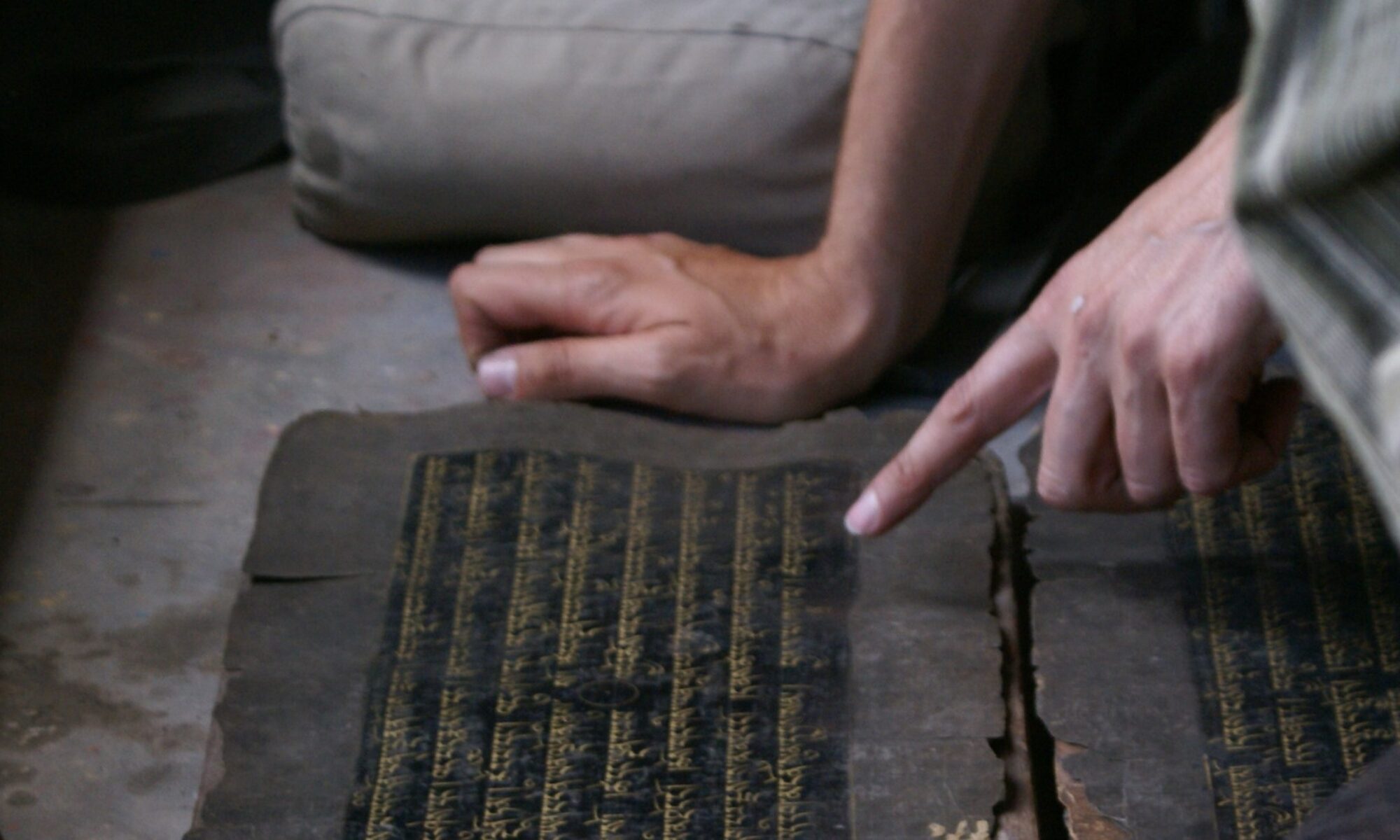The cooperation between the Resources for Kanjur and Tanjur Studies database (rKTs) and the Buddhist Digital Resource Center (BDRC) is a significant collaboration in the field of Buddhist Studies, particularly in their focus on the preservation, digitization, and accessibility of Buddhist canonical texts. By combining their resources and expertise, BDRC and rKTS enhance the accessibility and possibilities to study Buddhist texts globally. Their collaboration allows for the aggregation and sharing of data, improving the navigation and usability of these texts for scholars and the interested public alike. This partnership exemplifies the benefits of cooperation in preserving and disseminating cultural and religious heritage.
Internal rKTs-BDRC resources
The images used on the rKTs site predominantly come from the extensive collection of the BDRC library and the images obtained during fieldwork by the Tibetan Manuscript Project Vienna (TMPV). These images are meticulously catalogued by the TMPV and then hosted on the BDRC servers, ensuring their long-term accessibility. The images on BDRC are presented as single page images, even if the source images contain multiple pages on each.

In order to achieve this result, the cropping of images was done manually until the recent emergence of the SCAM tool (see here), which allows images to be processed much more quickly than before. In this way, rKTs was able to put online a good number of collections which were awaiting cropping (for example the images of Matho).
External resources
Another important source for the study of the Tibetan canon are the Kanjurs and Rnying ma rgyud ‘bum collections digitized by the British Library as part of the Endangered Archives Programme (EAP). This initiative has preserved numerous valuable manuscripts, making them accessible for research and study. Recognizing the significance of these collections, rKTs and BDRC swiftly integrated these digitized texts into their platforms. This integration has greatly enriched the resources available to users, providing a broader and more comprehensive field of study.

The EAP sources, which include the digitized Kanjurs and Rnying ma rgyud ‘bum collections, present a unique challenge for readers. These images have been photographed in a way that each image shows two pages side by side, with subsequent images displaying the backside of these pages. As a result, navigating these collections requires readers to continuously go back and forth between images to follow the text sequentially. This can make reading and studying the manuscripts more cumbersome compared to single-page formats, necessitating extra effort to piece together the intended order of the pages. To enhance the readability of the manuscripts and achieve a consistent representation of the collections, rKTs utilized the SCAM tool to virtually crop the EAP images.

While the British Library provides these images at a reduced resolution on its platform, higher resolution versions are available via the International Image Interoperability Framework (IIIF) server. By processing the low-resolution images of Chizhi’s Kanjur with the SCAM tool and combining the resulting files with the EAP manifests, rKTs was able to virtually crop the higher resolution IIIF images. This process significantly improves the user experience by allowing for easier navigation and study of these important witnesses.

